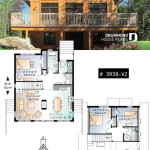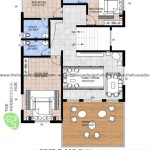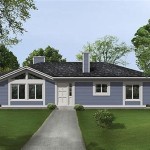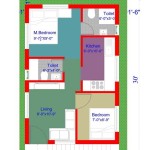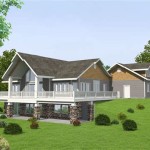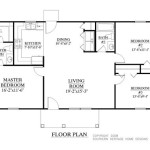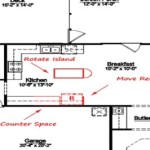House Plans With Great Rooms: A Comprehensive Guide
The great room, a central gathering space in contemporary home design, serves as a multi-functional hub for relaxation, entertainment, and family interaction. House plans incorporating great rooms prioritize open-concept living, fostering a sense of connectivity and spaciousness. This article delves into the key aspects of house plans featuring great rooms, exploring their design considerations, benefits, and variations.
Understanding the Great Room Concept
The great room, often the largest room in the house, typically combines the functions of a living room, family room, and sometimes even the dining room and kitchen. Its defining characteristics include open floor plans, high ceilings, and ample natural light. The absence of dividing walls promotes a seamless flow between different activity zones, enhancing communication and creating a welcoming atmosphere.
Traditionally, homes often featured separate living rooms reserved for formal occasions and family rooms designed for everyday use. The great room concept consolidates these spaces, creating a more versatile and dynamic living environment. This design shift reflects a modern lifestyle that values informal gatherings and flexible living arrangements.
The size and shape of a great room vary depending on the overall house plan and homeowner preferences. However, most great rooms are significantly larger than traditional living rooms, allowing for a variety of furniture arrangements and activities. The layout should facilitate both intimate conversations and larger social gatherings.
The integration of the kitchen into the great room is a common feature in many modern house plans. This arrangement allows for easy interaction between the cook and other family members or guests. Kitchen islands often serve as a visual and functional divider, providing additional counter space and seating.
The location of the great room within the house plan is also a crucial consideration. Many designs position the great room at the rear of the house, offering views of the backyard or surrounding landscape. Other designs place the great room at the center of the house, serving as a central hub connecting different wings or floors.
Key Design Considerations for Great Rooms
Designing a successful great room requires careful attention to several key factors, including layout, lighting, acoustics, and focal points. The layout should facilitate movement and interaction while defining distinct activity zones. Lighting should be layered, incorporating natural light, ambient lighting, and task lighting to create a comfortable and functional space.
Acoustics are often overlooked but play a crucial role in the overall comfort of the great room. Hard surfaces like hardwood floors and drywall can reflect sound, creating echoes and making it difficult to hold conversations. Soft materials like rugs, upholstery, and curtains can absorb sound, improving the acoustic environment.
Focal points are essential for creating visual interest and anchoring the space. A fireplace is a classic focal point in a great room, providing warmth and a sense of coziness. Large windows offering scenic views can also serve as focal points. Other options include built-in shelving, artwork, or a striking piece of furniture.
Furniture selection is crucial for maximizing the functionality and comfort of the great room. Modular furniture, such as sectional sofas and ottomans, offers flexibility and can be easily rearranged to accommodate different activities. Coffee tables, end tables, and console tables provide surfaces for drinks, books, and other items.
Storage solutions are also important in a great room. Built-in cabinets, shelving units, and storage ottomans can help keep the space organized and clutter-free. Consider incorporating hidden storage options to conceal electronic equipment, toys, and other items.
The architectural style of the house should be reflected in the design of the great room. For example, a modern house might feature clean lines, minimalist décor, and large expanses of glass, while a traditional house might incorporate more ornate details, such as crown molding, wainscoting, and a fireplace mantel.
Ceiling height is a significant factor in the overall feel of the great room. High ceilings can create a sense of spaciousness and grandeur, while lower ceilings can create a more intimate and cozy atmosphere. Cathedral ceilings, vaulted ceilings, and tray ceilings are all popular options for great rooms.
Window placement and size are crucial for maximizing natural light and ventilation. Large windows and skylights can flood the great room with natural light, reducing the need for artificial lighting. Operable windows can also provide ventilation, improving indoor air quality.
Benefits of House Plans With Great Rooms
House plans featuring great rooms offer numerous benefits, including increased living space, enhanced family interaction, and improved flow between different areas of the house. The open-concept design promotes a sense of connectivity and encourages communication among family members and guests.
Great rooms are ideal for entertaining. The spacious layout allows for easy movement and conversation, while the integrated kitchen makes it easy to prepare and serve food and drinks. The great room can accommodate large gatherings without feeling cramped or overcrowded.
The versatility of the great room makes it suitable for a variety of activities. It can serve as a place for family movie nights, game nights, or casual gatherings. The open layout also allows for flexible furniture arrangements to accommodate different needs.
The increased natural light in a great room can improve mood and productivity. Natural light has been shown to have numerous health benefits, including improved sleep quality and reduced stress levels. A well-lit great room can create a more positive and inviting atmosphere.
Great rooms can also increase the resale value of a home. Open-concept living is highly desirable among modern homebuyers, and a well-designed great room can be a significant selling point.
The integration of the kitchen into the great room simplifies meal preparation and cleanup. The open layout allows the cook to interact with other family members or guests while preparing meals. This can make mealtime a more social and enjoyable experience.
Great rooms can be easily adapted to different lifestyles and needs. The flexible layout allows for customization and personalization to suit individual preferences. Whether it's a cozy family room or a sophisticated entertaining space, the great room can be tailored to meet specific requirements.
The seamless flow between different activity zones in a great room promotes a sense of harmony and balance. The absence of dividing walls creates a more open and fluid living environment.
Overall, house plans with great rooms offer a modern and versatile living space that enhances family interaction, promotes social gatherings, and increases home value. Careful design considerations are crucial for maximizing the functionality and comfort of the great room, ensuring that it serves as a central hub for daily life.

Modern House Plan With 2 Car Garages Auto Court And Terrises 3346

Plan 790015glv 3 Bed One Story House With Vaulted Great Room In 2024 Homes Plans

Modern House Plan With Two Story Great Room 18831ck Architectural Designs Plans

10 Great Room Floor Plans With Amazing Photos The House Designers

Ranch House Plans A Craftsman With Lots Of Outdoor Spaces

Two Story Luxury Traditional House Plan 1631

Craftsman Home Plan With Vaulted Great Room 60631nd Architectural Designs House Plans

10 Great Room Floor Plans With Amazing Photos The House Designers

Tips For Selecting The Right Floor Plan Your Home Sater Design Collection

4 Bedroom Ranch Style House Plan With Outdoor Kitchen

